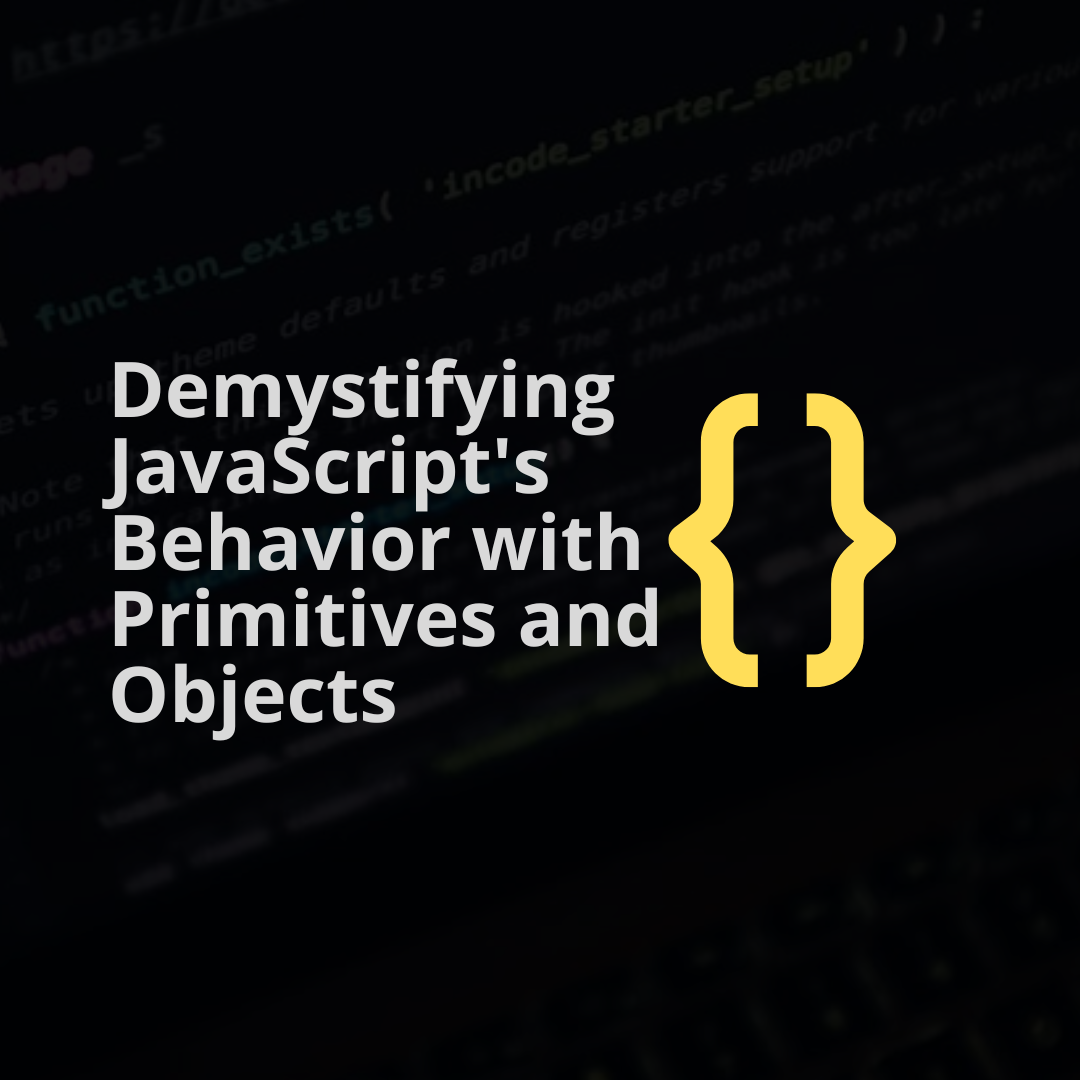Demystifying JavaScript's Behavior with Primitives and Objects
 mahi samia
mahi samia
Have you ever wondered why JavaScript sometimes treats primitive values like objects? Let's dive into this intriguing behavior and uncover how JavaScript seamlessly combines primitives and objects.
Part 1: The Mystery of Strings
In this simple example, I declared a variable name and assigned it the value "samia" However, when I accessed name.length, it returned 5, as if name was an object, not a primitive string.
let name = "samia";
console.log(name.length); // Output: 5
Part 2: Using methods with primitives
Let's take another example, and explains what happens under the hood.
let name = "samia"
console.log(name.toUpperCase()) // SAMIA
Again we can access the method toUpperCase() just like we usually do with objects, What's happening here, why does it look like javascript is treating name variable as an object?
Part 3: Unwrapping the Mystery
Whenever it seems like we're treating primitives as objects, these steps happen:
Auto-Boxing: The process where JavaScript temporarily treats primitives as objects to access methods is known as "auto-boxing" or "boxing." When you access a property or method on a primitive, JavaScript automatically converts (boxes) the primitive into its object wrapper (e.g., String, Number, Boolean) behind the scenes. This is done on-the-fly without creating explicit object instances.
Method Execution: After the primitive is temporarily boxed, the method (e.g.,
toUpperCase()) is executed on the boxed value. The method runs, and any necessary transformations are applied to the primitive value.Unboxing: Once the method execution is complete, JavaScript "unboxes" the value, returning it to its original primitive state. There's no lasting object created; it's just a momentary conversion for method access.
Conclusion
JavaScript's ability to seamlessly blend primitives and objects is all part of its elegant design, aimed at making your coding life easier. It's like having the best of both worlds—efficient primitives when you need them and handy object wrappers when you don't.
So, the next time you encounter JavaScript treating a primitive like an object, you'll know it's all part of the magic behind the scenes.
Resource
Subscribe to my newsletter
Read articles from mahi samia directly inside your inbox. Subscribe to the newsletter, and don't miss out.
Written by

mahi samia
mahi samia
hey there 👋 i'm Samia, a Backend developer turning to frontend world. i used to work as a Laravel and PHP developer for 3 and half years, in that journey, i had to deal from time to time with some frontend tasks, like fixing responsiveness or converting some psd files into HTML & CSS, that was when i fall in love with it. I loved the idea of turning creative and beautiful design into reality, so i made that career switch and now turning fully to Frontend development. Feel free to checkout my journey on Instagram or just pass Hi